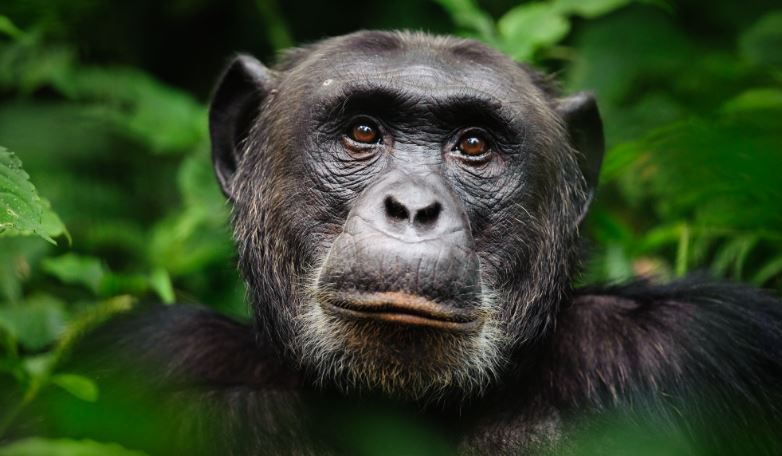


 2:34:50
2:34:50  2023-06-12
2023-06-12  912
912

Chimpanzees are great apes found across central and West Africa. Chimpanzees are highly social. They live in communities of several dozen animals, led by an alpha male and his coalition of male allies. Research has shown that male and female chimps have individual personalities, with females being more trusting and timid. Grooming is an important part of their social life, helping chimpanzees bond as they remove ticks and dirt from one another’s bodies.
Although they normally walk on all fours (knuckle-walking), chimpanzees can stand and walk upright. Chimpanzees have long arms, hands, and fingers, which help them climb trees and swing from branch to branch.
Tool use
This intelligent animal is one of the few species we know to use tools—which primatologist Jane Goodall famously observed in 1960. Her groundbreaking discovery led archeologist Louis Leakey to declare, “Now we must redefine ‘tool,’ redefine ‘man,’ or accept chimpanzees as humans.”
As Goodall observed, chimpanzees shape and use sticks to retrieve insects from their nests or dig grubs out of logs. They use stones to smash open tasty nuts and employ leaves as sponges to soak up drinking water. And chimpanzees can even be taught to use some basic human sign language.
Habitat and diet
Chimpanzees have the widest range of any great ape. Though many populations live in tropical rainforests, they can also be found in woodlands and grasslands spanning from central to western Africa. They usually sleep in trees—typically the sturdy Ugandan ironwood tree, which offers the most firm and stable place to sleep—and build themselves nests of leaves.
Chimps also do most of their eating in trees. Though they generally prefer fruits and plants, they have a varied diet that also includes insects, eggs, nuts, and hundreds of other things. They relish meat, and have been known to kill and eat monkeys, small antelope, and even tortoises, which they slam against trees to break open their shells.
Female chimpanzees can give birth at any time of year, typically to a single infant that clings to its mother's fur and later rides on her back until the time of weaning between ages three and five. Females reach reproductive age at 13, while males are not considered adults until they are 15.
Reality Of Islam |
|

A new NURBS

A research

Researchers
 9:3:43
9:3:43
 2018-11-05
2018-11-05
10 benefits of Marriage in Islam
 7:5:22
7:5:22
 2019-04-08
2019-04-08
benefits of reciting surat yunus, hud &
 9:45:7
9:45:7
 2018-12-24
2018-12-24
advantages & disadvantages of divorce
 11:35:12
11:35:12
 2018-06-10
2018-06-10
 6:0:51
6:0:51
 2018-10-16
2018-10-16
 8:21:9
8:21:9
 2018-06-21
2018-06-21
bahlool & the throne of haroun rashid
 8:20:35
8:20:35
 2018-06-21
2018-06-21
 7:59:14
7:59:14
 2018-06-21
2018-06-21
 2:13:43
2:13:43
 2022-05-27
2022-05-27
 11:11:59
11:11:59
 2023-02-01
2023-02-01
 2:33:4
2:33:4
 2023-02-15
2023-02-15
 5:57:34
5:57:34
 2023-03-18
2023-03-18
 5:41:46
5:41:46
 2023-03-18
2023-03-18
| LATEST |